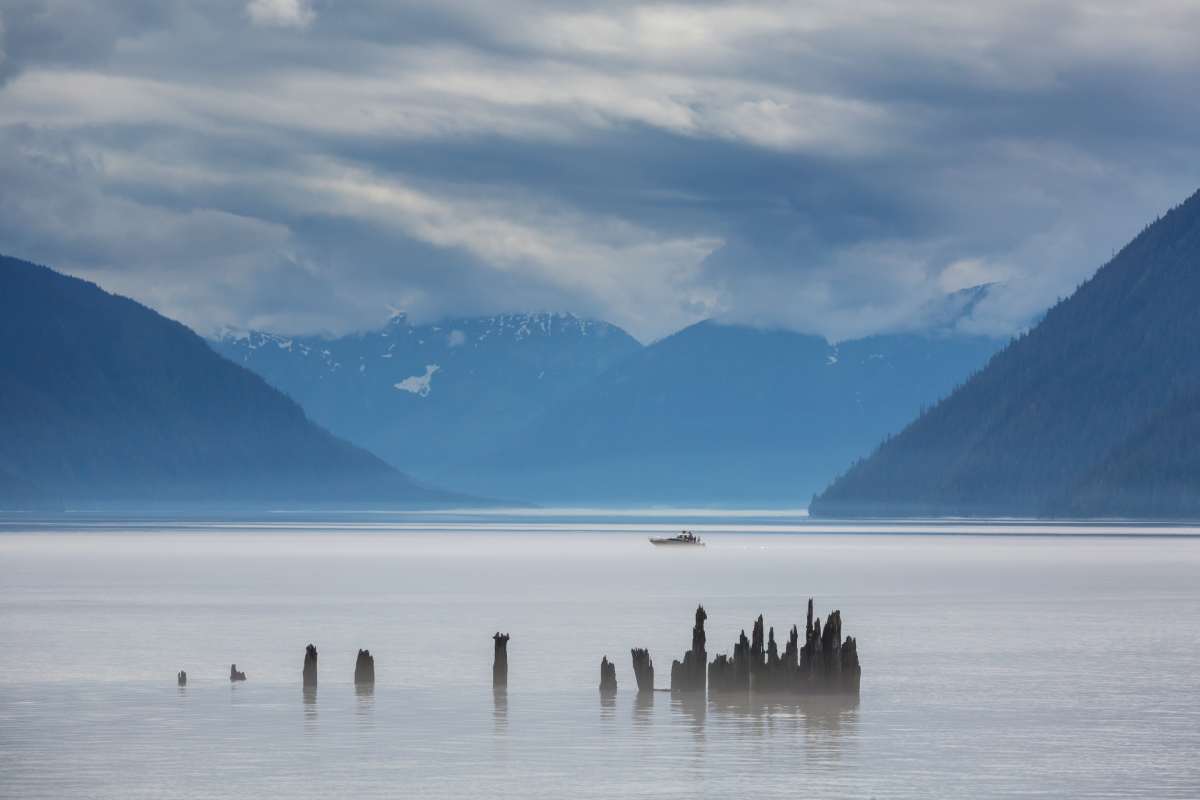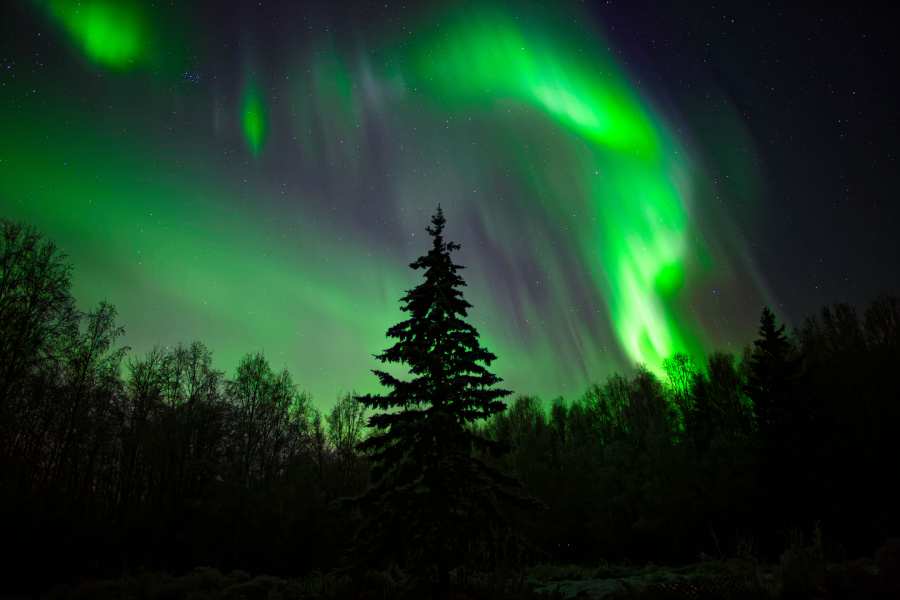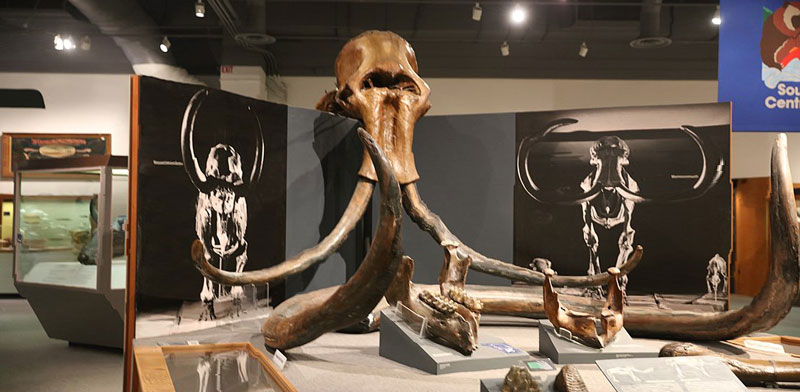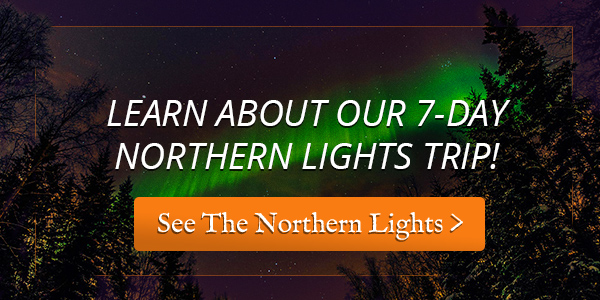 Voted as one of Alaska’s most popular tourist destinations by USA Today 10 Best Series, the Museum of the North attracts over 90,000 visitors each year. The museum opened in 1929, and houses over 1.5 million artifacts and specimens, which represent millions of years in biological diversity and thousands of years of cultural traditions in the North.
Voted as one of Alaska’s most popular tourist destinations by USA Today 10 Best Series, the Museum of the North attracts over 90,000 visitors each year. The museum opened in 1929, and houses over 1.5 million artifacts and specimens, which represent millions of years in biological diversity and thousands of years of cultural traditions in the North.
Featured image care of Enrico Blasutto
Compelling Reasons to Visit the State Museum
The museum offers collections across ten disciplines, including, archaeology, birds, documentary film, earth sciences, ethnology/history, fine arts, fishes/marine invertebrates, insects, mammals, and plants. In addition, the museum is a repository for artifacts and specimens collected on in Alaska and is also considered a leader in northern natural and cultural history research.
Visitors to the museum have the unique opportunity to engage with interactive exhibits that bring the rich history and biodiversity of Alaska to life. From hands-on displays showcasing ancient artifacts to immersive experiences exploring the diverse ecosystems of the region, the museum provides an educational and captivating journey for all ages. Additionally, the museum hosts regular events such as lectures, workshops, and guided tours, offering visitors a deeper insight into the fascinating world of northern natural and cultural history. With its dedication to research, conservation, and education, the museum stands as a beacon of knowledge and appreciation for the wonders of Alaska’s environment and heritage.
If you’re planning a trip to Alaska to see the Northern Lights, this is another must-see stop during your stay. While there are many reasons to add this museum to your list, here are five major reasons to visit.
1. Fantastic Architecture at the Museum Of The North In Fairbanks
If you’re interested in beautiful architecture, you’ll love what you see throughout the museum’s building.
Designed by nationally recognized architect, Joan Soranno and the GDM/HGA architectural team, the building reflects the beauty of Alaska. With expansive windows to feature surrounding views, visitors can see the Alaska Range, Denali, and the Tanana River Valley. Other areas of the museum were creatively planned, including the Rose Berry Alaska Art Gallery, The Grand Lobby, Collections Gallery, The Place Where You Go to Listen, and more.
The architectural brilliance of the museum not only showcases the natural splendor of Alaska but also serves as a fitting backdrop for the diverse array of exhibits housed within its walls. As visitors move through the different sections, they are greeted by a seamless blend of art and craftsmanship that enhances the overall museum experience. From the ethereal ambiance of The Place Where You Go to Listen to the intricate displays in the Collections Gallery, each space offers a unique perspective on Alaska’s rich cultural tapestry. Indeed, exploring the museum is a sensory journey that engages both the eyes and the soul, leaving visitors with a profound appreciation for the intersection of art and architecture in this captivating setting.
2.Rose Berry Alaska Art Gallery
As we mentioned above, the Rose Berry Alaska Art Gallery is a major reason to visit the museum. In this gallery, you’ll find over 2,000 years of Alaskan art, from locals to visitors, you can see ancient ivory carvings to contemporary sculptures. In addition, you’ll experience art in every medium, with featured pieces such as Sydney Laurence’s painting Mt. McKinley; the Okvik Madonna, a 2,000-year-old ivory carving from the Okvik Eskimo culture of the Bering Strait region; and a photograph by Ansel Adams, Mt. McKinley and Wonder Lake.
The diverse range of artistic masterpieces on display at the exhibition truly offers a unique and immersive experience for visitors. As you move through the gallery, you’ll encounter a mesmerizing mix of traditional and contemporary artworks that provide a window into different cultures, time periods, and artistic styles. Each piece tells a story and captures the essence of its creator, inviting viewers to appreciate the beauty and complexity of the world through the eyes of these talented artists. Whether you’re drawn to the intricate details of the Okvik Madonna or the sweeping landscapes in Ansel Adams’ photograph, there’s something for everyone to appreciate and explore in this captivating showcase of creativity.
3. Alaska’s Largest Gold Display
Did you know that Fairbanks started as a gold mining town? In honor of this part of our city’s history, the museum’s interior gallery features the largest display of gold nuggets in the state in addition to an astounding 36,000-year-old mummified Alaska steppe bison (Bison priscus). This piece was discovered by gold miners in 1979 and was donated to the museum.
The discovery of the mummified Alaska steppe bison added a fascinating layer to Fairbanks’ rich history, intertwining the city’s origins with the remnants of prehistoric life frozen in time. The museum’s dedication to preserving and showcasing such remarkable artifacts not only educates visitors on the area’s past but also serves as a reminder of the symbiotic relationship between humans and nature throughout the ages.
As visitors walk through the gallery, they are not merely observing relics of the past but connecting with the ancient roots that have shaped the city we know today. With each artifact, a story unfolds, bridging the gap between past and present in a captivating display of history and heritage.
4. Ties in with a Trip to See the Northern Lights
 One major reason to visit the Museum of the North is that it will perfectly complement a trip to see the Northern Lights. Learn more about the science, history, and beauty of the Northern Lights in a video and experience the all-sky camera and experiments to discover how and why we perceive the aurora.
One major reason to visit the Museum of the North is that it will perfectly complement a trip to see the Northern Lights. Learn more about the science, history, and beauty of the Northern Lights in a video and experience the all-sky camera and experiments to discover how and why we perceive the aurora.
You can also immerse yourself in the indigenous culture and traditions that revolve around the Northern Lights at the Museum of the North. Explore exhibits showcasing the folklore, myths, and spiritual beliefs of the native Alaskan tribes regarding the aurora borealis. Gain a deeper understanding of the significance of the Northern Lights in their lives and how they have been passed down through generations. By delving into these cultural aspects, visitors can truly appreciate the holistic experience of witnessing the spectacular natural phenomenon of the Northern Lights.
5. Take the Opportunity to Explore the Outdoor Exhibits
One unique part of the museum is its outdoor exhibits. The grounds include beautiful sculptures, historical artifacts, and cultural carvings for visitors to discover and explore. A few of these exhibits include the Wolf Totem Pole: Everyone’s Grandfather, the sculpture, Totem, by Bernard Hosey, and Christiane Martens’s sculpture Denali.
Visitors can easily spend hours wandering through the outdoor exhibits, mesmerized by the intricate details and rich stories behind each artwork. The Wolf Totem Pole stands tall and proud, symbolizing strength and wisdom passed down through generations. Totem, with its abstract and modern design, offers a stark contrast but still carries a deep sense of spirituality and connection to nature.
Cost of Admission to Museum of the North
Admission to the museum varies, but it’s also included when you book an Alaskan Ecotour with Gondwana. Below are current admission rates for the museum:
• Adult Admission (15+ yrs) – $14
• Youth Admission (5-14) – $8
• Alaska-based military families with ID – Free
• UA Staff / Faculty – $5
• UA Students with ID – Free
• Museum of the North Members – Free
• Museum Movie Ticket – $5
Plan Ahead for Your Visit To The Museum Of The North in Alaska
A few things to note ahead of your visit – make sure you have a minimum of three hours to explore the museum, be sure to download The Alaska App for the museum’s audio tour and decide which galleries you want to see before you arrive.
Visiting the Arctic Circle offers a unique opportunity to experience the breathtaking beauty of the polar landscape and witness phenomena like the Midnight Sun or Northern Lights depending on the season. Whether by driving the iconic Dalton Highway or taking a guided tour, travelers can immerse themselves in the pristine wilderness and rich cultural heritage of the Arctic region.



